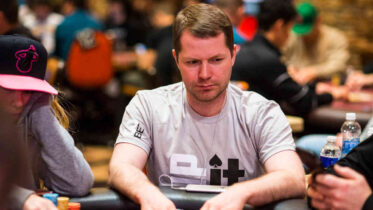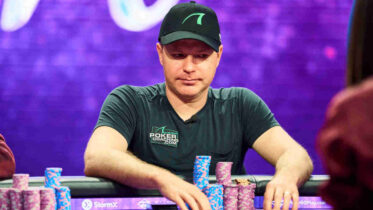Tournaments are more dynamic than cash games. They force you into a lot of situations you’d never encounter otherwise, so to play them successfully, you need to be flexible.
There’s no denying that luck plays a huge role in Texas Hold’em tournaments, but if you can grasp a few key concepts, you won’t be as reliant on the fickle affections of chance.
The 3 Key Ingredients to Winning NLH Poker Tournaments
Look at the Big Picture.
Taking a macroscopic view of the game will help you avoid frustration. Good players only cash 10-20% of the time in large tournaments. In fact, most of the solid players are cashing in at the lower end of that range because they either play a style that lets them accumulate a lot of chips (giving them a good chance to win the event) or they go out early. They also like to get aggressive on the bubble, where the risk and reward are both high.
On the other hand, having a playing style that gets you a lot of min cashes but never sees you go deep is not a recipe for success in tournament poker. This means even if you’re one of the best players in the world, you’re more likely to bust out and go home with nothing than you are to get some return on any individual investment – hence why it’s important to look at the big picture. Profit will come from cashing big, not from cashing often. Capitalize on your luck when it happens.
Hone Your Ability to Play Different Stack Sizes.
There are certain MTT strategies you can do when you’re 40+BB deep that you can’t do when you have 8BB, like flat calling someone’s raise when you have a pocket pair. Here are your stack sizes:
Shove Stack: <15BB
Re-Shove Stack: 12-24BB
Steal Stack: 18-40 BB
Re-Steal Stack: >20BB
Deep Stack: >40BB
Not only do you have to know how to play your stack sizes, but you have to be able to identify if your opponents know how to play theirs appropriately. The more you know, the more you will know what to look for.
The point is to know what you should and shouldn’t do with various stack sizes. This will keep you from bleeding chips and also keep you from pushing the envelope too far. It’s perfectly cool to get short-stacked if no profitable opportunities present themselves, and as long as you know how to play poker with that stack size and not make careless mistakes, you’ll be all good. In fact, it can be easier to play short stacked since you’re afforded fewer strategic options. Fewer decisions, fewer opportunities to make mistakes.
Understand the Implications of the Payout Structure.
Paying attention to the payout and blind structure will help you maximize your odds of cashing in significant money more frequently. A winner-take-all tournament will require a different strategy than a 100-seat guaranteed satellite.
In the short run, it’s easy to get caught up with where you are now in the tournament you’re playing, but again, you have to look at the long run and how often you’ll end up in those payout spots. Your overall strategy should reflect that. The amount of risk you want to take should reflect how payouts are structured. Is there a steep payout structure?
Then, take more chances. Flat structure? Err on the side of caution. You’ll also need to know what stages in the tournament (if ever) you should change gears between a risk-adverse strategy and a risk-inclined strategy.
I’ve said this a lot before, but it bears repeating: It’s OK to lose. It’s part of the game, especially when you play MTTs. There’s no secret strategy I can give you that will have you cashing 50% of the time, unless, perhaps, you’re playing heads-up sit ‘n’ go. However, by using the three tips I’ve outlined here, you’ll be on your way to winning as much as possible – and that’s really all you can ask for.




